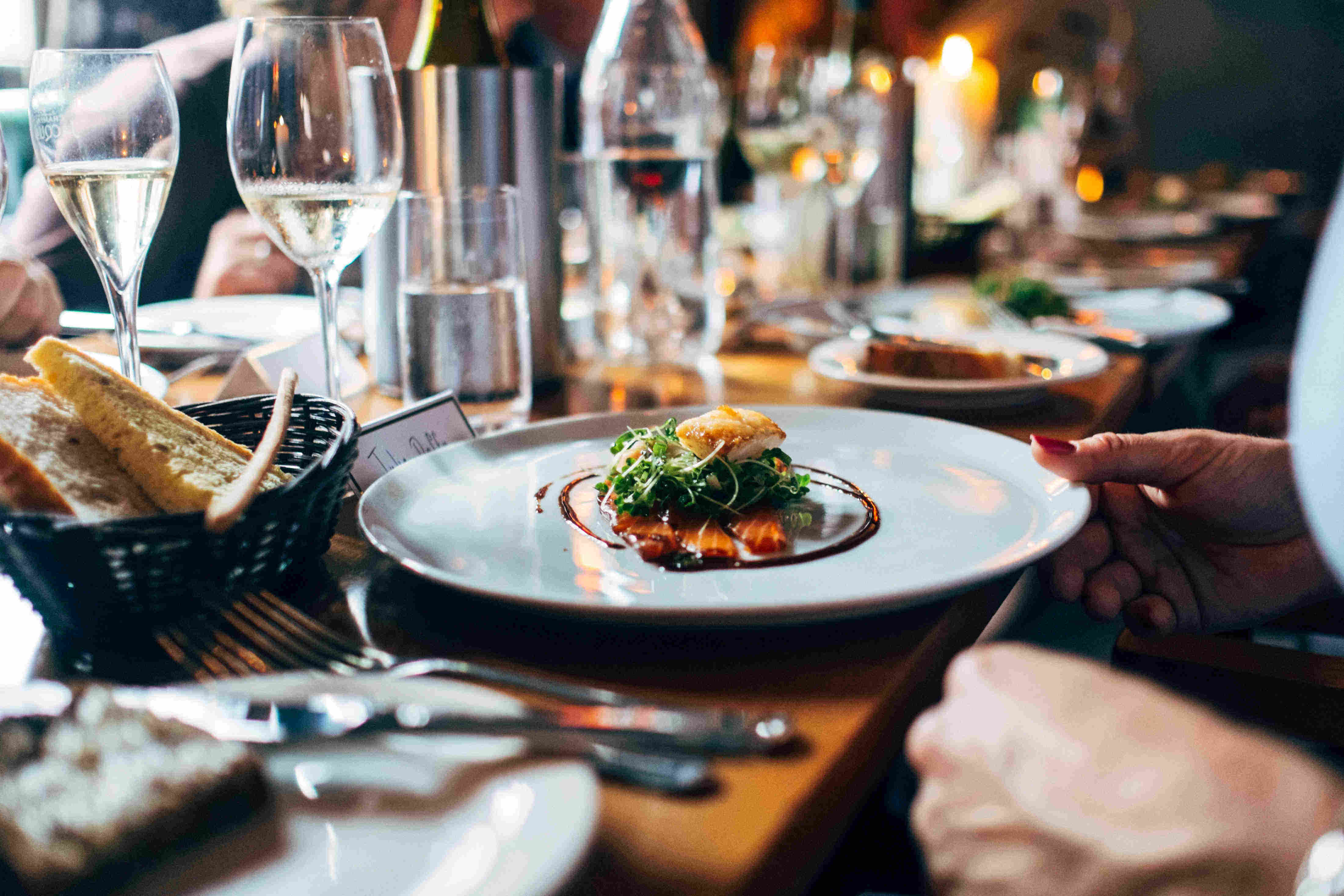
In 2019 the UK hospitality industry as a whole accounted for approximately 3% of the total economic output contributing around £59.3 billion. It is vital that pubs, bars, nightclubs, catering and foodservice businesses are properly equipped with the right commercial catering equipment to capitalise on the sectors possibilities.
Catering appliances and supplies are the core of any professional kitchen or bar. Without investing in the right pieces, menus will never successfully hit the mark with customers, and businesses will never reach their fullest potential. Whether looking for a full set-up or individual pieces understanding exactly what you need is vital.
This buying guide aims to compile all the essential information and tips that your business should be considering before making an investment to guarantee you always make the right decision.
Table of Contents
Understanding the Difference Between Domestic & Commercial
The Importance of Choosing the Right Catering Equipment
Types of Commercial Catering Equipment
Choosing Commercial Kitchen Equipment
Buying Catering Equipment On a Budget
Planning a Kitchen Layout Before Buying
Cleaning, Maintenance & Servicing
Understanding the Difference Between Domestic and Commercial
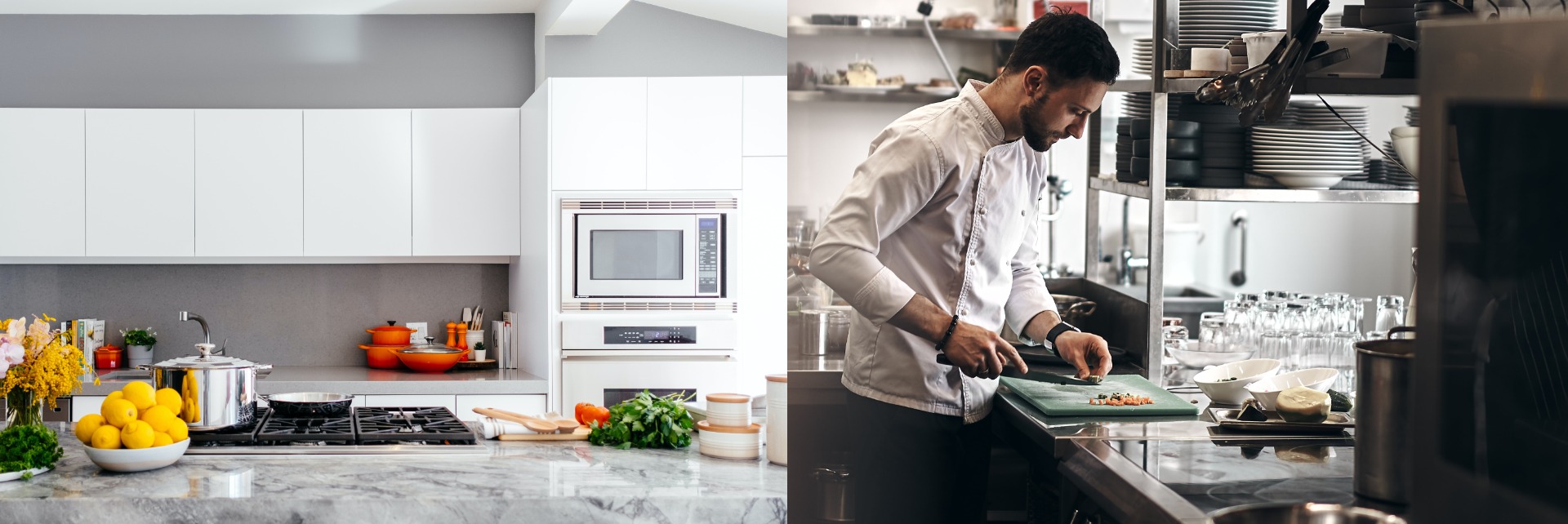
Although domestic and commercial catering appliances may perform similar jobs there are massive differences between them.
Level of Usage
- In the domestic home environment you will typically only use your cooking equipment 2-3 times a day for limited periods. This is classed as light duty usage.
- Commercial catering equipment will be in almost constant use with ranges, ovens and grills working for hours at a time. This is considered heavy duty use.
Size and Capacity
- Domestic appliances are designed to fit into standard kitchens and therefore are typically compact in stature. As they are generally only capable of cooking meals for limited numbers they operate with a reduced capacity.
- Dealing with multiple tables on a constant rotation throughout a single service and with more space to work with in a commercial kitchen, commercial appliances will be larger and able to handle greater capacities of food simultaneously.
Power and Performance
- While domestic equipment can undeniably produce tasty meals there is often an element of inconsistency with the results. Operating with less power than professional appliances, foods will also take longer to cook in typical household cooking appliances.
- Commercial kitchen appliances are designed to give precision results and consistency under the extreme pressure of a professional environment. Able to replicate dishes to the same high standard time after time, professional cooking equipment delivers increased power meaning that meals can be produced faster without any detrimental effect on quality.
Manufacture
- Manufacturers of domestic cooking units will often use standard materials to reflect the light duty use that they are designed for.
- When it comes to commercial manufacture you will often see the use of higher quality materials for a rugged, built to last element that promises the additional durability necessary to withstand heavy duty use.
Cost
- Domestic kitchen appliances are fairly priced for the domestic market, aimed for typical family budgets. The standard manufacturing materials and often average specifications, components and technology allow manufacturers to keep costs as low as possible.
- Due to higher quality materials, larger size, increased power and all round more refined and intelligent technology, commercial cooking equipment is more expensive however if you make the right decision, is well worth the extra when it comes to serving the very best for your paying guests.
The Importance of Choosing the Right Catering Equipment
Buying catering equipment is an important aspect of any hospitality business. Commercial appliances must be able to withstand the wear and tear and daily stresses of heavy duty use. With consistently high standards demanded from a professional catering kitchen, choosing the right units can be the difference between success or substandard results. Although commercial equipment is more expensive it will stand the test of time and produce more consistent results, faster and in greater quantities.
Why Trust FFD Catering Equipment with your Kitchen Equipment Needs?
Backed by decades of experience, FFD Catering Equipment have helped thousands of happy customers to find the perfect equipment to elevate their business and allow it to reach its fullest potential.
We understand the high costs involved when you buy commercial catering equipment and therefore aim to offer all products at highly competitive prices, making your budget stretch further. It isn’t all about low prices though, and so we back this up with our dedicated customer service.
The team are trained by the manufacturer’s themselves to ensure that we’re best placed to offer real and relevant information to our customers. We give recommendations and advice based on years of experience and product knowledge and all completely free of charge.
Also providing full aftercare support, we’re with you throughout every step of the process: from choosing the right equipment for you and taking you through the purchase process to offering the support you deserve should you experience any issues at any point after your purchase and delivery are complete.
Types of Commercial Catering Equipment
Catering equipment is often used as an umbrella term for anything you will find in a commercial kitchen and as such there are a massive range of products held under this banner. Here we break down all equipment into the general areas of cooking, food preparation, cookware, bakeware and utensils, extraction, fabrications, warewashing, servery and display, front of house and safety and hygiene.
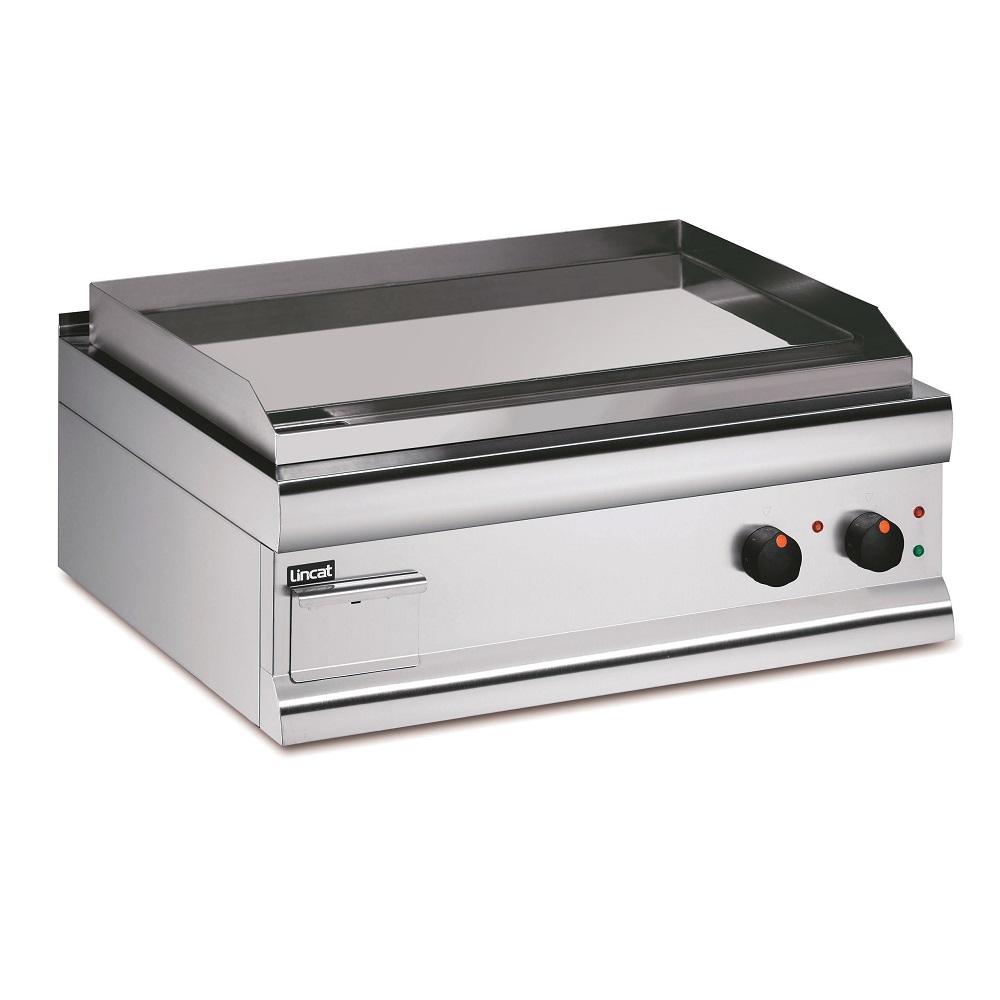
Area: Cooking
Includes: Combi ovens, convection ovens, ranges, pizza ovens, microwaves, fryers, oil filtration, griddles, chargrills, kebab grills, salamander grills, steamers, bratt pans, smokers, rotisseries, pasta cookers, rice cookers, sous vide, vacuum pack machines, toasters, pasta machines and waffle and crepe makers plus more.
Overview: Including all the core cooking appliances and smaller cooking equipment that any business could need. These pieces will establish the base from which your kitchen can produce exquisite dishes to keep customers satisfied. Vacuum pack machines can also be used to seal foods, not only for cooking but also to maintain freshness whilst in refrigerated storage.
Area: Food Prep, Sealing & Food Storage
Includes: Food processors, mixers, blixers, mixers, graters, slicers, grinders, chippers and peelers, vacuum pack machines and plastic food storage containers.
Overview: Designed to make light work of time-consuming food preparation, you can mix, puree, peel, chop, grind and slice with precision and efficiency to minimise prep time and free chefs up to tackle the core cooking areas on the menu.
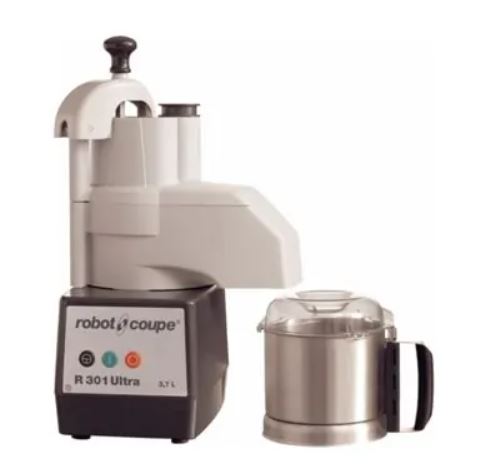
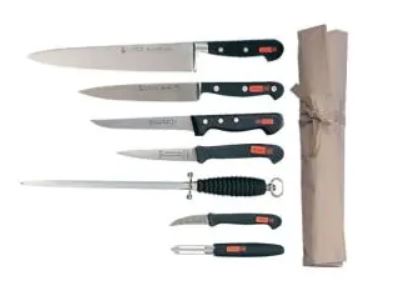
Area: Cookware, Bakeware and Utensils
Includes: Cooking essentials such as mandolins, spatulas, rolling pins, blow torches, funnels, timers, can openers and thermometers, chopping boards, pots and pans plus more. Also includes chefs knives, sterilising cabinets and sharpening steels.
Overview: Consists of the smaller yet essential tools that play a major part in any commercial catering and foodservice kitchen. It is these utensils, supplies and cooking accessories that guarantee that operations can run smoothly and efficiently. Gastronorm pans and trays, good quality pots and pans and oven to table cookware also play a vital role in the preparation and cooking for large quantities of foods. Many products within this area are available with a next day delivery.
Area: Extraction and Ventilation
Includes: Filtration, baffle, condensate and extraction canopies.
Overview: An essential element of any commercial kitchen these canopies create a cleaner, safer and more comfortable working environment in catering operations. For more information take a look at our article on ‘Kitchen Extraction; Getting it Right
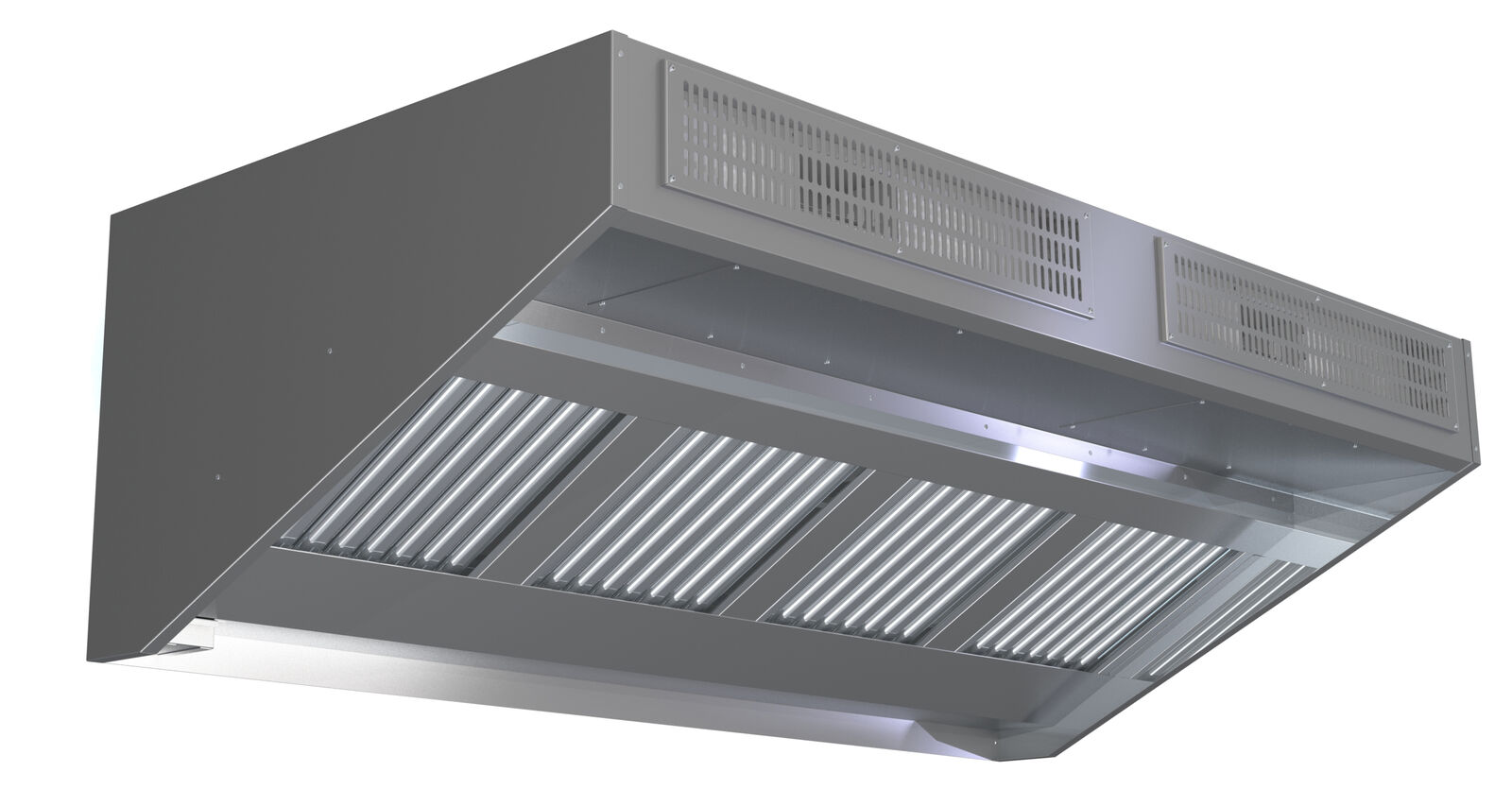
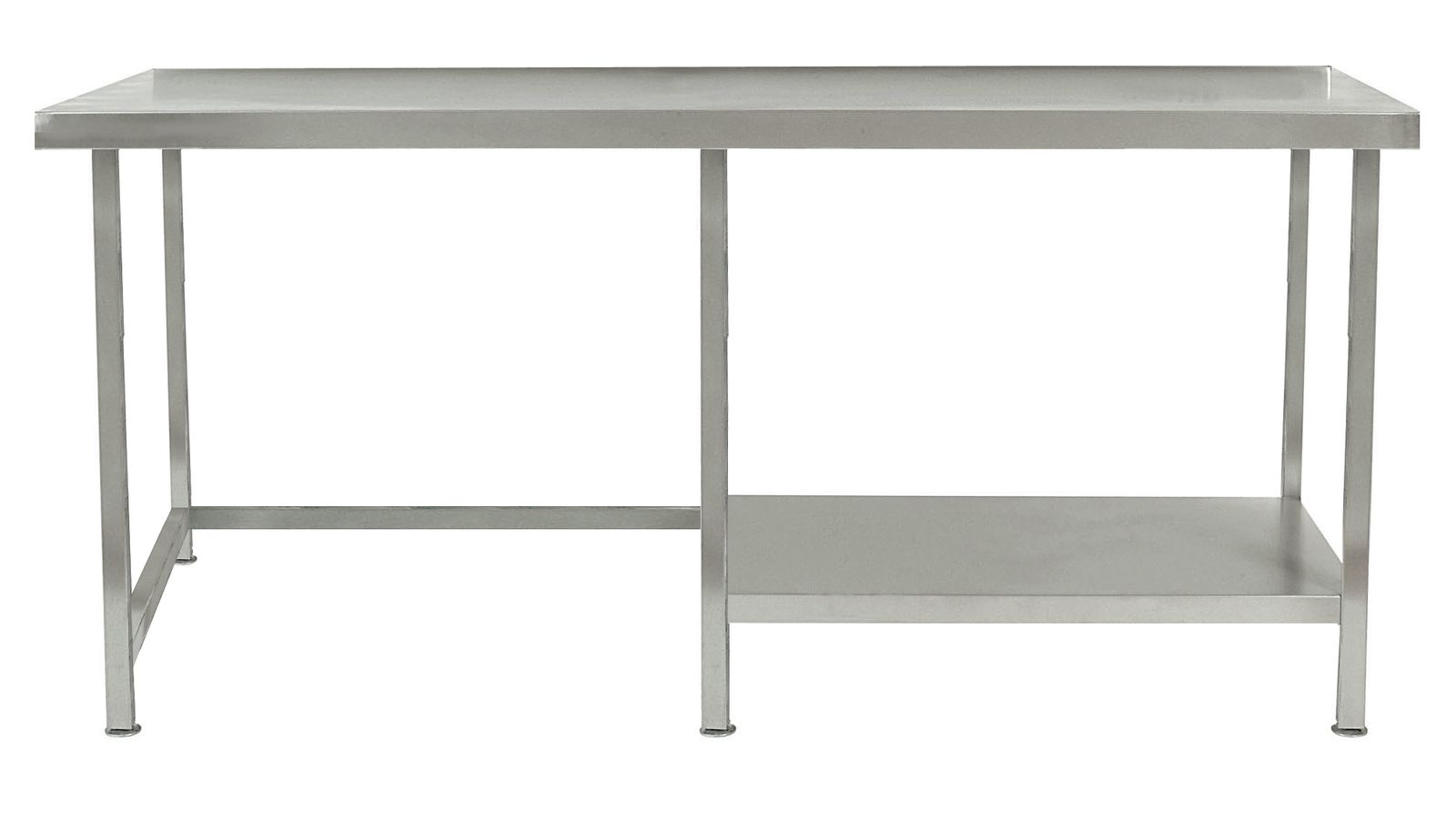
Includes: Stainless steel tables, shelves, racking, sinks and gantries plus more.
Overview: Creating valuable work space and organisation in professional kitchens, stainless steel fabrications are a permanent and constant fixture of any operation. With a range of sizes available, there’s a fabrication to fit any space.
Area: Warewashing
Includes: Glasswashers and commercial undercounter dishwashers, pass through and hood type dishwashers, conveyor dishwashers, cutlery and utensil washers, entry and exit tables and detergents and rinse aids.
Overview: The warewashing section of any kitchen is essential to maintaining a constant flow of clean, hygienic cutlery, crockery, cookware and utensils. Ensuring that the kitchen and front of house areas can continue to function efficiently, choosing the right ware washer in regard to capacity and layout is vital.
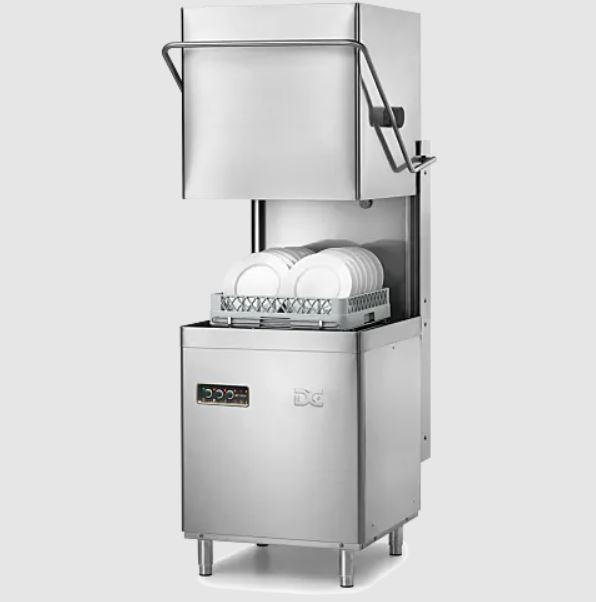
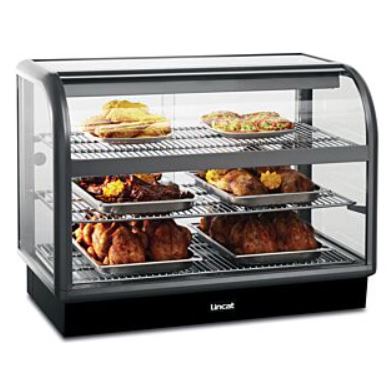
Area: Servery and Display
Includes: Heated merchandisers, chafing dishes, buffet displays, bain maries, soup kettles, hot cupboards, chip scuttles and catering trolleys plus more.
Overview: Serving and displaying hot and ambient foods without compromising on quality is a key factor not only for restaurants, canteens and buffets but also shops, cafes and supermarkets. This range of equipment can cater for all types of business whether self-service or canteen style.
Area: Front of House
Includes: Tableware, beverage equipment such as coffee and espresso machines, drinks dispensers and juicers, furniture for indoor and outdoor areas and clothing for kitchen and waiting staff.
Overview: Incorporating all the aspects that present your business to your guests, choosing elements that reflect the quality and style of your premises is critical. From the furniture, place settings and glassware to the beverage equipment and even how staff are dressed will all ensure that customers generate the right impression of your business from the moment they walk through the door. Many products within the tableware section are available with a next day delivery.
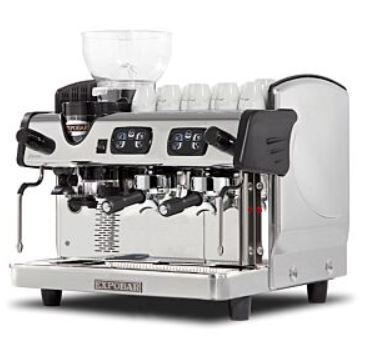
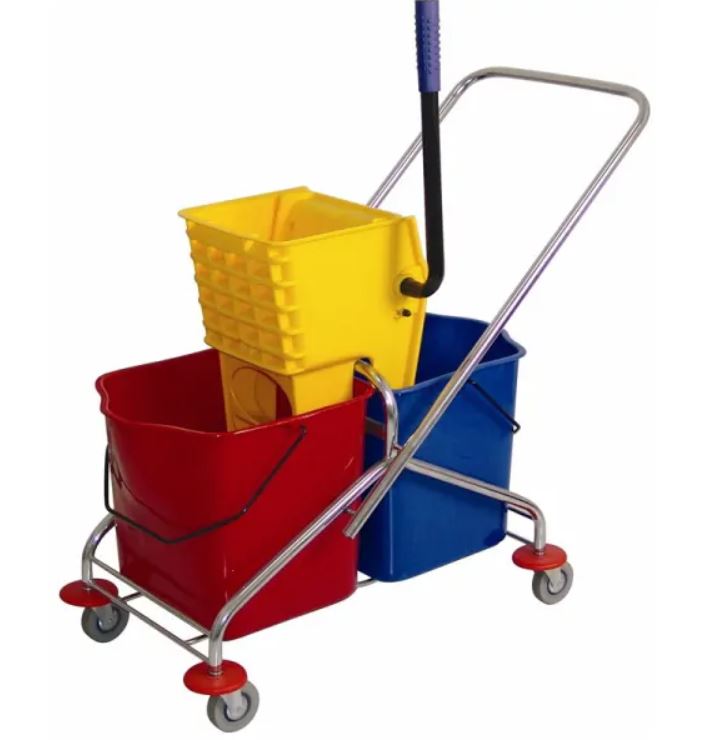
Area: Safety and Hygiene
Includes: Cleaning chemicals for every area of the business, janitorial equipment such as mops, brushes, buckets, mops, rotary cleaners and cloths, safety signs and flooring and laundry plus more.
Overview: Safety, hygiene and cleanliness within a business is critical not only for guests but also staff. Equipping housekeeping crews with everything they need to create a clean, hygienic environment is easy with this massive range of cleaning supplies. Many items within this area are available with a next day delivery.
Choosing Commercial Kitchen Equipment
There are many factors that need to be considered when searching for your ideal piece of catering or warewashing equipment. The type of business you operate, the size of your kitchen, the number of covers you expect to serve, the style and intricacy of the menu and the budget you have available will all play a part. We have many equipment buying guides on our site to help you make the right decision when it comes to kitting out your kitchen.
Equipping for a Full Set-Up
We recommend teaming up with your chef and begin by looking through your menu, working through each dish and listing everything you’ll need to create the finished product. It is worth also taking into account the intricacy of this menu. If you’re only producing a small, simple menu then investing in a top of the range combi oven for example, might be futile and needlessly expensive as only a few of the advanced programs and expert features will be required.
Any set-up should aim to make efficient use of space, with functionality a key concern. A smooth, effective work flow should be encouraged and safety and ease of use for staff should also be top priorities.
Individual Equipment Choices
For individual pieces consider whether your old equipment was able to deal with demand. Do you need to replace with like for like or to upgrade to a larger more powerful model? When it comes to warewashing, do you need a water softener or drain pump?
For more information about water softeners, break tanks and drain pumps and whether they’re necessary in your business take a look at our in-depth guide.
There are a few universal primary factors that should be taken into account when kitting out your kitchen. There will also be additional areas that are more specialised, unique to each individual appliance and should be considered on a piece by piece basis.
So what are the basic factors that are relevant for the majority of equipment purchases?
Capacity
Make sure that the equipment can deal with the level of orders at your busiest period. Choosing a unit that is too small for purpose will lead to longer wait times for guests and stressed chefs in the kitchen. Opting for something too large equates to wasted potential complete with larger overheads and higher power costs.
Output
Closely linked to capacity, can the equipment produce what you need it to in the time frame required?
Power type
Gas or electric is always a core consideration. Is your building set-up for gas or electric? If electric, can it support 3 phase equipment? Confer with chefs: If you’re setting up from scratch do they have a preference as to what they cook with, gas, electric or induction? Also consider energy efficiency, precision and safety when deciding on power source.
Warranty
All appliances will have some form of warranty. This may be on a full parts and labour basis, a parts only term, a semi-commercial cover or back to base. Make sure that the equipment you choose has a suitable warranty cover for your business needs.
Shopping by Business Type
The type of business you operate will reflect the type of catering equipment you need. Whether you’re kitting out a buffet, bakery, canteen, restaurant or a mobile catering business it will often dictate the core cooking appliances that you’ll need.
Here we break down the main types of foodservice business and examples of equipment that could prove critical.
Food Service and Takeaways
This group consists of typical foodservice businesses including those that provide sit down table service or takeaway food services. Appliances should be chosen to allow for the production of a wider choice of dishes meaning that a good choice of equipment is vital to deliver the menu variety that customers expect.
Includes operations such as restaurants, bistros, cafes and fast food/takeaways
Core Equipment to look at:
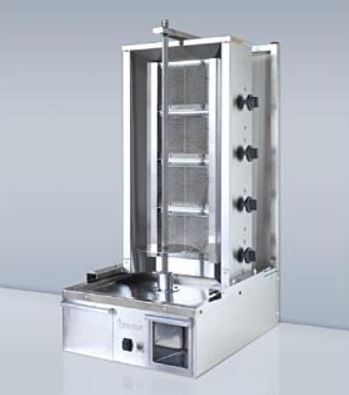
Large Scale Catering
Generally aimed at catering operations producing food for upwards of hundreds of people. Equipment must be able to produce large quantities of consistent quality food in a single use to cope with catering en masse demands.
Includes operations such as canteens, hotels, conference facilities, schools and prisons.
Core Equipment to look at:
- Bratt Pans
- Large Combi Ovens
- Cook and Hold Ovens
- Water Boilers
Counter Service
Displaying foods while maintaining serving temperatures without undermining quality is key here. With ambient and heated equipment you can lay out a wide variety of foods for guests to choose from. Can't find the right layout for your needs? Equipment is available that can be easily suited together to create the look and feel of a bespoke layout without the bespoke prices. Contact our sales team for more information on the Parry Flexi-Serve range.
Includes operations such as buffets and carveries.
Core Equipment to look at:
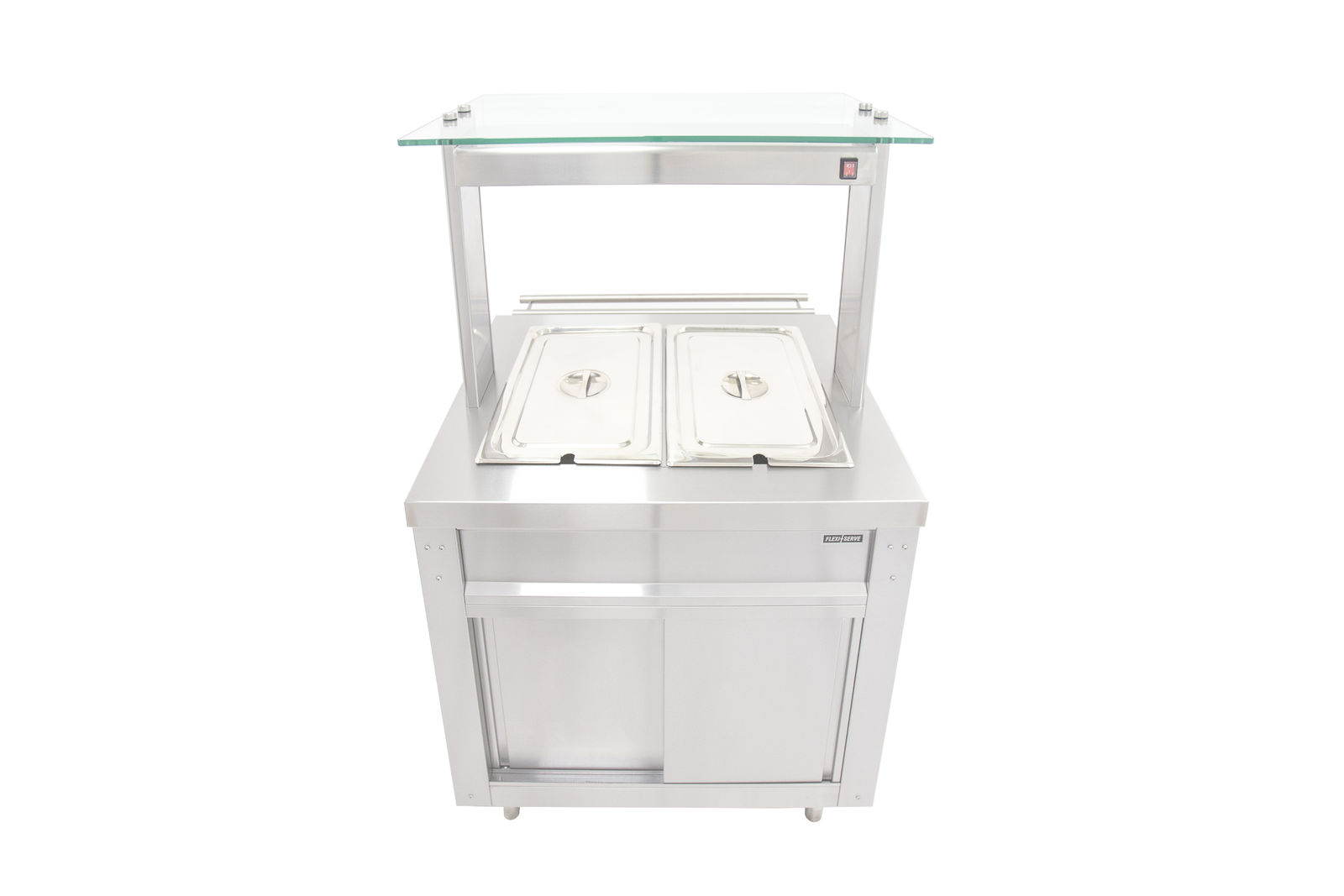
Specialist
When specialising in a specific area of catering it often calls for specialist equipment to help achieve the desired results. These appliances are designed to produce exquisite dishes and finishes that other general equipment isn’t able to replicate.
Includes operations such as bakeries and charcuteries.
Core Equipment to look at:
- Bakery Ovens
- Smokers
Mobile Catering
This category contains any catering business that serves food from a temporary location. Equipment will need to be powered by LPG gas or via a light single phase electric connection. Units will need to be compact and able to produce consistent quality results continuously.
Includes burger vans, hot potato stands, coffee outlets, fish and chip vans etc.
Core Equipment to look at:
- Barbecues and Hog Roasts
- Crepe Makers
- Doughnut Fryers
- Countertop Fryers
- Grills and Griddles
- Potato Ovens
- Soup Kettles
- Microwave Ovens
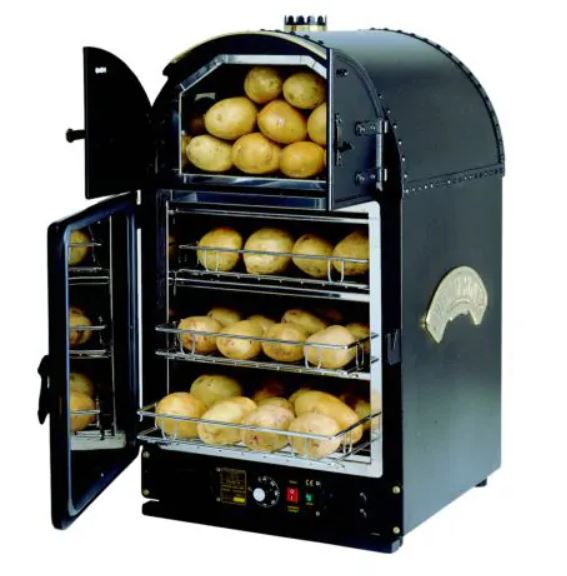
Buying Catering Equipment On a Budget
The hospitality and food service industry can be highly lucrative however it also has one of the biggest outlays. Fully kitting out a kitchen will frequently run into the tens of thousands at least, with individual appliances from leading brands still costing a hefty amount. Whether choosing individual equipment or going for a full set-up, always aim to get the best your budget allows for.
The hospitality and food service industry can be highly lucrative however it also has one of the biggest outlays. Fully kitting out a kitchen will frequently run into the tens of thousands at least, with individual appliances from leading brands still costing a hefty amount. Whether choosing individual equipment or going for a full set-up, always aim to get the best your budget allows for.
Cost Versus Quality
Weigh up which catering appliances and supplies hold more importance to your operation. Always aim to spend more on the core pieces that bear the brunt of menu creation and maybe cut back the spend on equipment that will only occasionally be used.

TOP TIP: Buying equipment with the lowest price tag doesn’t always mean it’s the cheapest in the long run. Consider the cost over the lifetime of the appliance including the power consumption, quality, expected lifespan, likelihood of breakdown, productivity and cooking time: you may choose to save a few pennies initially but will actually end up spending more in total over the lifetime of the equipment.
Commercial Catering Equipment Leasing
Where budget is an issue commercial leasing is always an available option. Leasing allows businesses to invest in and take advantage of top quality equipment without the large initial outlay; simply spread the cost while reaping the rewards, making the equipment work for you.
Typically, commercial leasing terms are based on a lease purchase basis where you pay regular monthly instalments and equipment is yours at the end of the term. Agreements based on lease hire/rent may also be an option however at the end of the term, the equipment must be returned. Lease hire/rent is typically only available where a full equipment warranty is applicable.
Challenge Us with Price Match
Shopping around to get the best price possible is a pastime that every business owner will be used to when investing in new equipment. To make sure you get the best deal available, set us a challenge and take advantage of our price match policy. If you’ve found the appliance you want for cheaper somewhere else, get a written quote including the supplying company details and date of quote and send it over to us. We’ll try our best to match, if not beat the price.

TOP TIP: Always remember to check out company reviews. You may be able to get hold of what you need for less but also consider the level of customer service and aftercare that you’ll receive.
Manufacturer 24 Months Interest Free Credit
Some manufacturers such as Hobart who specialise in commercial warewashers including hood dishwashers offer a 24 month interest free credit option to eligible businesses. Always ask your supplier for any payment offers which may be available from different manufacturers.
Buy Graded Commercial Catering Equipment
Buying graded commercial catering equipment is also an option. All manufacturers deal with graded equipment: units that have been dispatched and then returned for a number of reasons. Customers may have ordered the wrong appliance or when delivery has arrived it has suffered minor cosmetic damage during transit leading to them wanting to return their goods.
Once units have been dispatched from the manufacturer, should they are returned for any reason they are classed as graded or ‘used’ stock and cannot be resold as new even when products may have only been unwrapped from the original packaging. It is this returned stock that creates the perfect opportunity for businesses to bag a bargain.
Equipment will be ‘graded’ as to the condition of the piece, unwrapped yet otherwise pristine models will demand a higher price than those with minor scratches or dents. You may also find ex-demo models available which may have seen occasional use but are still like new. Graded stock will often be recent models and so this avenue of purchase will mean you can benefit from current equipment for a reduced price.
Equipment will be ‘graded’ as to the condition of the piece, unwrapped yet otherwise pristine models will demand a higher price than those with minor scratches or dents. You may also find ex-demo models available which may have seen occasional use but are still like new. Graded stock will often be recent models and so this avenue of purchase will mean you can benefit from current equipment for a reduced price.
Commercial Catering Appliance Auctions
Online auctions have proven to throw up some amazing deals and are often an attractive way to kit out a commercial kitchen on a budget or just nab the odd piece at a bargain price. Catering equipment is often sourced from businesses or premises that have unfortunately shut their doors for good meaning that all units will have been used previously. Appliances may be older models that are near the end of their lifetime or may not have been adequately cleaned, maintained or serviced by the previous owners, so product research and buyer caution is essential to knowing exactly what you’re buying.
Buying in Bulk
Did you know that placing an order for multiple pieces of catering equipment could mean that you're eligible for a bulk order discount?
Many kitchens will only require a single oven or a single fryer for example, but when a high production kitchen is looking for multiple numbers of the same appliance to kit out their operation or a chain of businesses, this can prove financially rewarding. Such discounts may also be available on large orders placed on a number of different units when they are all from the same brand and total over a specified amount. This means that extra savings may be able to be made for brand loyalty when purchasing large quantities of equipment across an entire range. Ask our sales team for any multi-unit discounts that might be available when you order large quantities of equipment.
Emergency Rental Kitchens
Emergency rental kitchens can be sourced for situations where the show must go on. Allowing businesses to continue trading in circumstances that would otherwise see them temporarily close, a container fully fitted out with a complete kitchen can be delivered to site, ideal where fire or other emergency prevents normal service. For more details give our sales team a call.
Government Funding
As an incentive for businesses to lower their carbon footprint, government funding and schemes have been put in place and may be available for the purchase of, or an upgrade to energy efficient and environmentally friendly equipment. Always investigate what maybe available to you.
Planning a Kitchen Layout Before Buying
Commercial kitchens require extensive planning and design before being put into practice. This process not only ensures that the kitchen remains efficient with streamlined production but will also influence and help to determine the type and size of equipment required.

Tried and Tested Templates for Efficient Kitchen Design
The Golden Triangle
The Golden Triangle is an idea first applied to domestic kitchens however was quickly brought in to commercial environments to improve and optimise the food production process.
Based on the theory that kitchens consist of three main sections or components - the sink for cleaning, the cooker for cooking and a refrigerator for cold storage - kitchens were designed to promote a natural flow and allow home cooks or kitchen staff to quickly and efficiently move from one section to the next as required.
The 5 Point Plan
As professional catering kitchens have progressed by growing in size with more complex menus and new catering equipment and additional processes becoming integral to food production, the kitchen design model has also been forced to adapt.
Now including additional areas for food preparation and food service the layout resembles more of a star or pentagon with 5 main points rather than the original triangle.
Choosing Appliances Based on your Design
Think of your kitchen as a well oiled machine, a production line that must work smoothly to push orders through in a timely fashion while still maintaining high standards.
By incorporating clear planning of the proposed layout for your kitchen you can ascertain where each piece of equipment will work best within its own section and also the space you have to work with to create a streamlined design.
Cooking, Cold Storage and Food Preparation Areas
In cooking, cold storage, food preparation and serving areas weigh up the area you have in relation to the amount of covers you expect to serve and the menu you aim to produce to give you a clearer idea of what is achievable when it comes to the appliances you should invest in. Play with where equipment will ultimately be positioned to make sure that the final layout makes sense when the kitchen is working and functional. Measure all sections carefully to guarantee that the equipment you buy will actually fit within it’s intended section without creating obstruction.
Warewashing Areas
The warewashing section is its own microcosmic area within the kitchen which requires it’s own design plan. Think about areas such as pre-wash, main wash and distribution of clean dinnerware and cookware; there should be clear differentiation between each zone.
The pre-wash section typically comprises tabling, sinks and pre-rinse spray jet arms. It is here where staff bring items to be cleaned and the pot wash staff rinse products before loading them in a warewashing basket ready to be passed through entry tabling into the next zone.
The main wash area will house the heart of the ware washing section, your commercial dishwasher. The type and size of machine should reflect the size of the business and the number of covers serve. You may also choose to house detergents here so that they’re ready and on hand for refilling when required. Once baskets have been washed they are pushed through onto exit tabling to move through to the third zone.
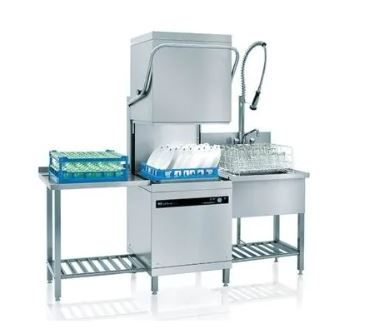
The end of the warewash line consists of tabling where clean dinnerware and cookware can be stored until returned to their rightful place.
Tackling each kitchen area in isolation and then pulling each design together in the final stages can help to not only create a workable space but will also give you greater detail as to the size, requirements and specifications you need from each piece of equipment.
CAD Designs and Site Visits
When planning a full kitchen layout, the design process is a major responsibility and not all business owners feel confident enough to go solo. Luckily there’s plenty of help on hand from experienced professionals who can help to make your dream catering kitchen become a reality.
CAD designs are a great way to help envision how the kitchen can flow and work for your business. These detailed, technical drawings work out equipment placement with accuracy and precision to guarantee the best layout possible for the space available.
Once the design is in hand, it is vital to make sure that the equipment you intend to purchase is suitable for your site.
Site visits are often available whether carrying out a full redesign or just buying a singular piece of equipment and can be arranged to assess the site to make sure the correct utilities are in place, the positioning is right for your business and also to ensure that you’re choosing the right equipment for the task in hand.
For more details about CAD designs and site surveys please get in touch with our sales team.
Observing Government Rules and Regulations
There are many regulations and guidelines that must be addressed in regard to food service businesses. With equipment in particular, pay attention to legislation including but not limited to, gas safety regulations, fire safety regulations, kitchen layout regulations, equipment maintenance guidelines and government regulations surrounding ventilation and extraction.
From the food preparation and service aspect and regulated by the Food Standards Agency and local authorities, the Food Safety Act, General Food Laws, Food Safety & Hygiene and Food Information Regulations must be adhered to. Read more about Government Key Regulations.
Always consult an expert and the government website to ensure that your business is complying with the law in every aspect and retain all certification.
Cleaning, Maintenance and Servicing
Food hygiene is paramount in any catering or hospitality setting. While all areas of a catering kitchen need to meet strict cleaning and hygiene guidelines, it is also vital that equipment is given the same care and attention. Clean, hygienic equipment is a major element to achieving high standards. Regular cleaning ensures cooking appliances and kitchen equipment remain in excellent condition, preventing harmful bacteria or cross contamination, while also being capable of producing the high quality results you need to succeed.
Maintenance and servicing of catering equipment is critical to guarantee your equipment always performs at it’s best and delivers consistent results while remaining efficient and extending the potential lifetime of the unit to maximise your investment.
Staff must all be made aware of the importance of maintaining equipment through correct use and regular cleaning. Any changes to performance that is noticed during use such as inconsistent heating or failure to reach temperature should be reported so that potential issues can be looked into before they become a major breakdown.
After a long service, cleaning can be an unwelcome chore however is an essential element of any catering kitchen. To promote a daily, weekly and monthly routine try creating a cleaning checklist including details of the piece of equipment, the cleaning that needs to be carried out, the date the task is carried out and by which member of staff. Staff should also be encouraged to carry out regular equipment checks and inspections during cleaning to assess any potential issues before they occur. This may include doors, seals, glass, power connections and thermostats etc.
While cleaning can be carried out in house, servicing and maintenance will require a qualified engineer. Catering equipment should undergo servicing on an annual basis at a minimum, however we always advise referring to, and following the manufacturers manual as a primary source of information. Who knows the equipment better than the people who designed and built it?
Demos, Training and Installations
Demos
You can read the literature and look at the pictures but nothing helps you to get a feel for equipment and to understand its potential more than seeing it in action. Many brands offer some form of opportunity to experience equipment in action typically through live demos, special organised events or live online appointments. This may be via a public event at a nearby location, although some manufacturers will bring equipment to your business to give you the full rundown. Demo options are ideal for equipment that has advanced performance, software and features such as Unox and Rational combi ovens.
Training
Catering equipment training is a massive part of any catering operation and should be given to every new member of staff as well as ongoing refresher sessions offered to any team members that feel they need it. Training not only ensures that appliances are being used to their fullest potential but that they are being used correctly to minimise breakdown and efficiently to minimise unnecessary power usage.

Installation
Depending on the piece of equipment in question, installation may be an essential requirement. Where installation isn't a requirement however is offered, and the appliance is quite technical, always seriously consider using the experts. Some manufacturers not only install units to guarantee they're in full working order but also configure the equipment so that it’s tailored to your unique business practices and works perfectly for your procedures.
Manufacturers and Warranties
We supply a massive range of products from well recognised catering equipment brands such as Rational, Unox, Parry, Falcon, Lincat, Merrychef, Blue Seal and Buffalo plus many more. Our site houses premium, mid range and budget options to guarantee that every business can find the perfect piece for their budget.
Before finalising your purchase pay attention to the type of warranty that is supplied as standard. Make sure the equipment you choose has the right warranty for you. If you have a qualified engineer that can carry out works for you then a parts only cover may suit you fine however be aware that you will be liable to cover these costs yourself. We always advise sticking with a full parts and labour warranty where possible to provide cover for any fault or breakdown caused by manufacturer error. Please note that any issue caused by user fault, misuse or neglect will not be covered under the terms of a commercial warranty. If you have found your perfect unit but the warranty covers parts only as standard there maybe additional options to extend or add labour.
If you have a parts only warranty and you experience a breakdown but are unable to locate a suitable engineer, we may be able to recommend reputable companies in your local area, although you will be liable to cover the costs of any work carried out.
Choosing Catering Equipment - 5 Top Tips
1.Use the Experts - get a site visit where possible - know you’re getting the right equipment, that it is suitable and that you have the utilities to support the set-up.
2.Experience - attend or arrange a demo where one is available.
3.Plan - whether setting up from scratch or buying individual pieces, planning is key. Will equipment meet your requirements for menu creation, production demands and the space you have if you need to expand in the future?
4.Buy - invest in the best that your budget allows to ensure consistent results, greater quality and longer equipment life span.
5.Warranty - make sure you’re covered to a level that's acceptable for your business.
Finally, we also recommend speaking to a knowledgeable supplier who can provide impartial advice and help to guide you to the catering equipment that best meets the needs of your business. Contact our team today and we'd be happy to help.
